Overview
Students will prepare for upcoming artmaking lessons using close looking, speaking, writing, and/or sketchbook prompts.
Materials and Tools
- Pencil
- Sketchbook or 1 piece of paper
- Drawing from the previous lesson
Activities
Note: The following activities are written with sample language you may use with your students. Following the art-making lesson, you may choose as many reflection activities as desired for students to work on in class or independently.
Explain to students that the slides they see during the lesson will be shared with them so they may review the lesson on their own and continue to make more art.
Step 1: Introduction (5 minutes)
Hello Artists! Today we are going to continue exploring drawing from observation. In this lesson, we are going to see how composition changes what we notice about an object in a drawing.
What do you think we mean by “composition”?
Composition is the way elements of an artwork are arranged on a page.
Step 2: Close Looking: Liu Dan (10 minutes)
Let’s take a close look at two artworks by Liu Dan to begin.
Note to Teachers: Before teaching with a work of art, spend some time looking closely on your own. Familiarizing yourself with the artwork will prepare you to guide the close looking activity.
If your students are new to looking at art together, you can introduce the activity to students in the following way:
Today we are going to spend some time looking at and discussing a work of art together. When we look at art, there are no right or wrong answers. I’m going to ask you to look closely, share your ideas about what you see, and listen respectfully to others’ ideas. Everyone’s ideas are important. We all see things differently and when we look at art, we can learn to see through each other’s eyes.
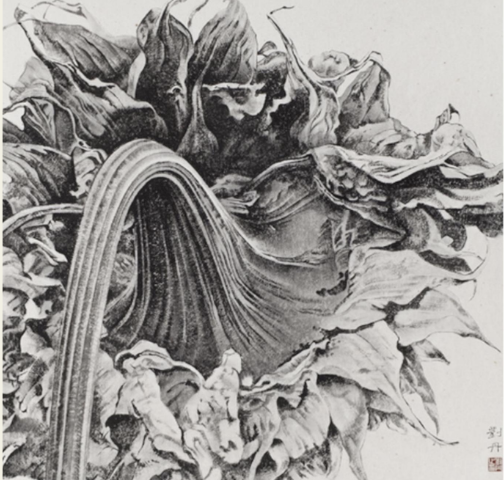
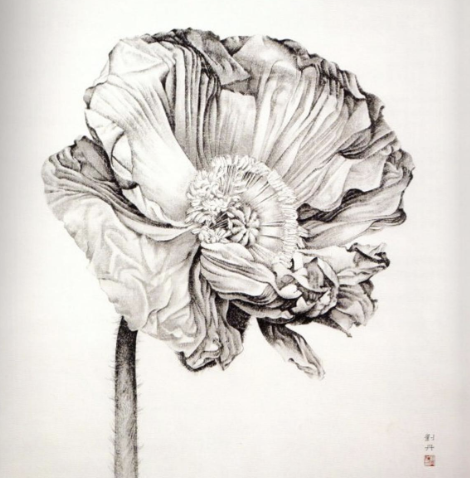
Discuss with a partner, the class, or a grown-up:
- What do you notice about the composition in each of these drawings by Liu Dan?
- What are three things that are the same?
- What are three things that are different?
- What parts of the flower did the artist draw in each?
- How much of each flower can you see?
- Where did the artist choose to place the flower on the page? (Corner, middle, top, bottom)
- Where do you notice empty spaces?
Step 3: Sketchbook Activity (10-15 minutes)
Let’s explore how changing the composition of a drawing changes what we notice about an object. Choose the same natural object that you drew in the previous lesson, or a new object if you used the photos. Make a new drawing of this object in your sketchbook, this time thinking about the composition.
Position your object in different ways to see how it looks.
View it from the top, bottom, side, or back.
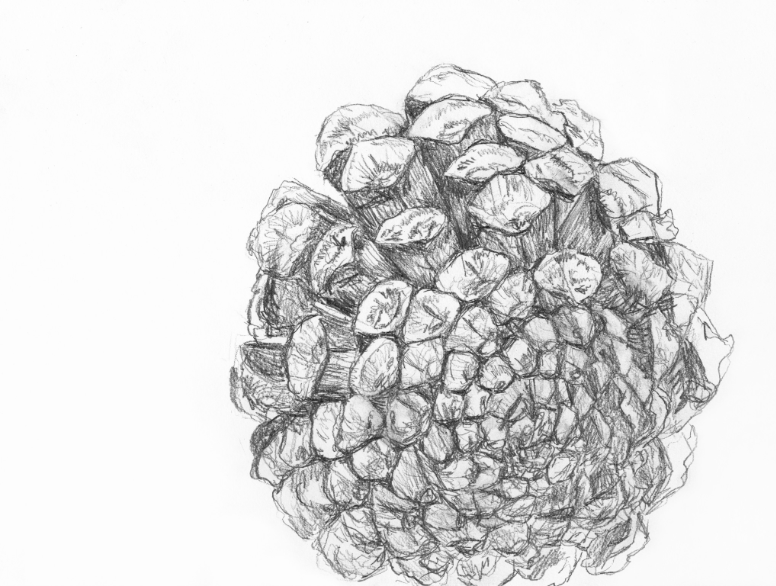
Which way will you draw it?
Will you draw it from close-up or far away?
How much of the object will you show?How will your object fill the page?
Where will the empty spaces be?
Model exploring composition, then describe why you’re making a specific choice. Ask students to describe what they notice as you move the object. Look at it up close and from far away. Try different positions and ask students to share what they notice. Choose one position to draw and model identifying and drawing the outer shape of the object. Then, begin to draw the object’s visual texture, using marks, lines or patterns.
Step 4: Writing Activity (10 minutes)
Now we are going to write about your sketchbook drawing. Write 3-4 sentences to answer these questions:
- What part of your object did you draw? (Top, bottom, side, or back)
Did you draw it close-up or far away? - How does your object fill the page?
Where are the empty spaces?
What does your composition highlight? - Do you notice anything new about your object?
Based on your students’ writing skills, choose from the options below.
Option 1: Write sentences to answer 4-5 of the questions above.
For example:
I drew my object from the side.
The view is close-up.
My object fills the right side of my page.
The empty spaces are on the sides and above the pinecone.
My composition highlights the area where the scales get close together.
I noticed that the scales each look a little bit different.
Option 2: Use the sentence frames and vocabulary list below to write about your artwork.
I drew my object from the __________. (Top, bottom, side, or back)
The view is __________. (Close-up or far away)
My object fills the ________________ of the page. (Corner, middle, top, bottom)
There is empty space _______________.
My composition highlights __________________.
When I looked closely, I noticed __________________.
Option 3: Label your drawing using the words below to describe your composition:
Position: top, bottom, side, or back
View: close-up or far away
Then, name the following:
The part of the object that your composition highlights.
Something new you noticed about your object.
Resources

Liu Dan. The Sunflower. 2007 Ink on paper 30 x 30 in.

Liu Dan. Unfolding Time. Ink and brush
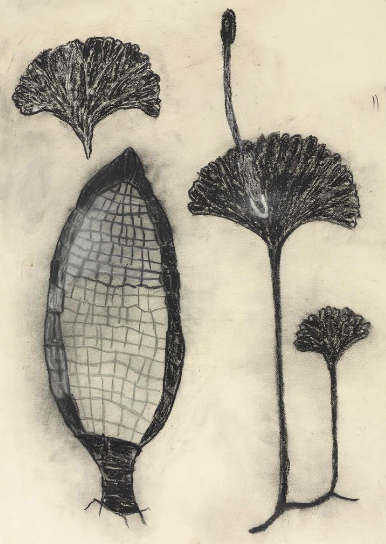
Terry Winters. Untitled. 1983, Charcoal on paper, 41 ½ x 29 ½ in.
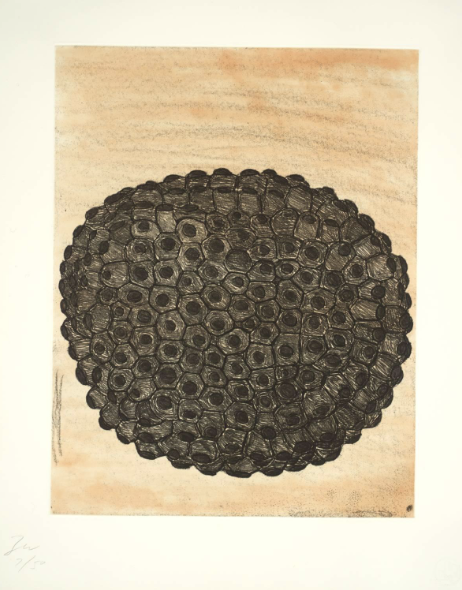
Terry Winters. Untitled (from Album #4). 1988, Etching on paper, 21 × 16 in.
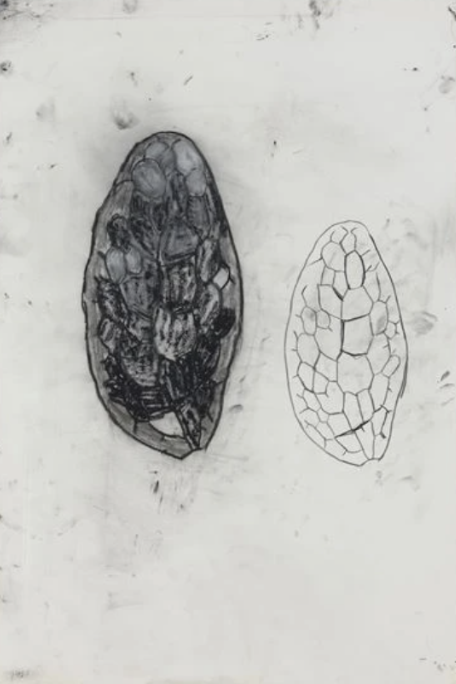
Terry Winters. Untitled. 1983, Charcoal, gouache and graphite on paper, 44 ¾ x 30 ¼ in.

